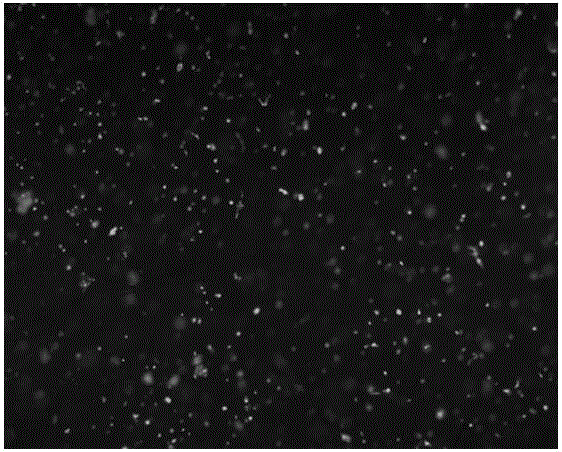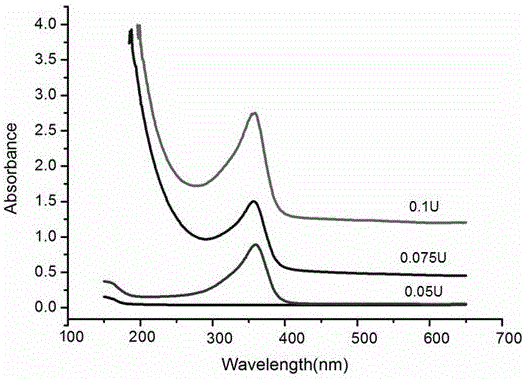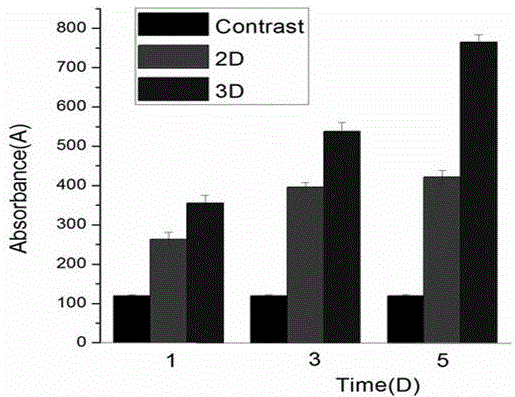Self-assembly collagen template tissue engineering material as well as preparation method and application thereof
A technology of tissue engineering and self-assembly, applied in medical science, prosthesis, etc., can solve the problems of complex preparation, cytotoxic side effects, fast degradation, etc., and achieve the effect of simple preparation method, controllable process parameters, and good biological activity
- Summary
- Abstract
- Description
- Claims
- Application Information
AI Technical Summary
Problems solved by technology
Method used
Image
Examples
Embodiment 1
[0058] Dissolve 10g of collagen in 100ml of Tris buffer solution, stir magnetically at 35~45°C until clarified, take the glycerol solution and add it to the collagen solution in a ratio of (10:1) and mix evenly; Aminamidase is dissolved in deionized water, the amount added varies with the enzyme activity, and the enzyme activity is between 0.025-0.1. Mix the two prepared solutions at 35-45°C to make them cross-linked and gel The coagulation time of the body varies with the amount of enzyme added.
[0059] Table 1: Clotting time corresponding to different enzyme additions
[0060]
[0061] Through the ultraviolet spectrometer, the amino cross-linking peak appears near 350nm, the degree of cross-linking gradually increases with the addition of enzyme, the absorption peak is enhanced, and the curing time is shortened, but the curing time at a higher temperature (36.5°C) is shorter than that at room temperature ( 25°C) the curing time is slightly longer, indicating that the cr...
Embodiment 2
[0063] Dissolve 2g of collagen in 20ml of Tris buffer solution, stir magnetically at 35~45°C until clarified, take glycerol solution and add it to the collagen solution in a ratio of (10:1) and mix evenly; mix 0.5g of bio-based Transglutaminase was dissolved in 1ml of deionized water, the two solutions were magnetically stirred and mixed evenly, poured onto a glass plate covered with polyethylene film, and dried at 25-37°C for 24 hours to obtain a 2D collagen film.
Embodiment 3
[0065] Cell experiment: Mix the collagen / glycerol solution prepared in Example 1 with the cultured human umbilical vein endothelial cells (HUVECs) cells within 10 minutes, then add 0.075U transaminase, and perform 3D in a transwell culture plate Cultivate, observe its cell growth status under an optical microscope, and evaluate its cell proliferation and life and death status.
[0066] The result is as figure 1 As shown, the cells are evenly distributed in the collagen gel. After 24 hours of culture, it is found that there are red blood cells, that is, dead cells. During the daily replacement of the cell fluid, the cell death and life are evaluated by presoblue, and the results are as follows image 3 As shown, cells were cultured in 2D and 3D forms over time. Since 2D cells only adhere to the wall and grow, when the cells proliferate to a certain number, contact inhibition occurs, resulting in slow or stagnant cell proliferation; and Cells are cultured in a 3D environment w...
PUM
 Login to View More
Login to View More Abstract
Description
Claims
Application Information
 Login to View More
Login to View More - R&D
- Intellectual Property
- Life Sciences
- Materials
- Tech Scout
- Unparalleled Data Quality
- Higher Quality Content
- 60% Fewer Hallucinations
Browse by: Latest US Patents, China's latest patents, Technical Efficacy Thesaurus, Application Domain, Technology Topic, Popular Technical Reports.
© 2025 PatSnap. All rights reserved.Legal|Privacy policy|Modern Slavery Act Transparency Statement|Sitemap|About US| Contact US: help@patsnap.com



